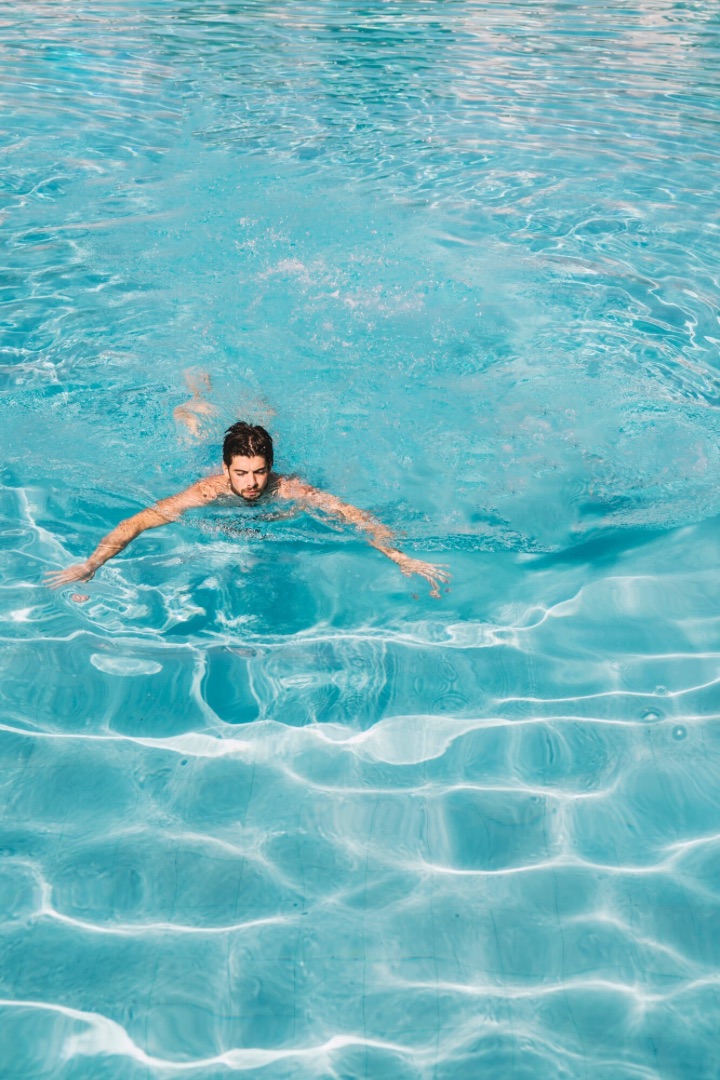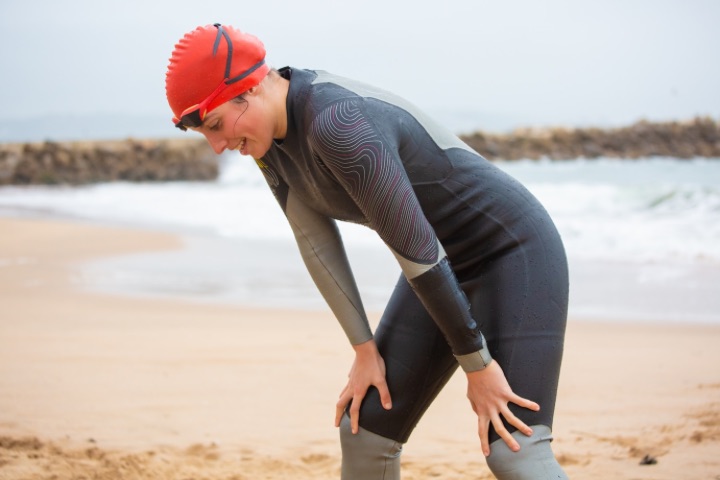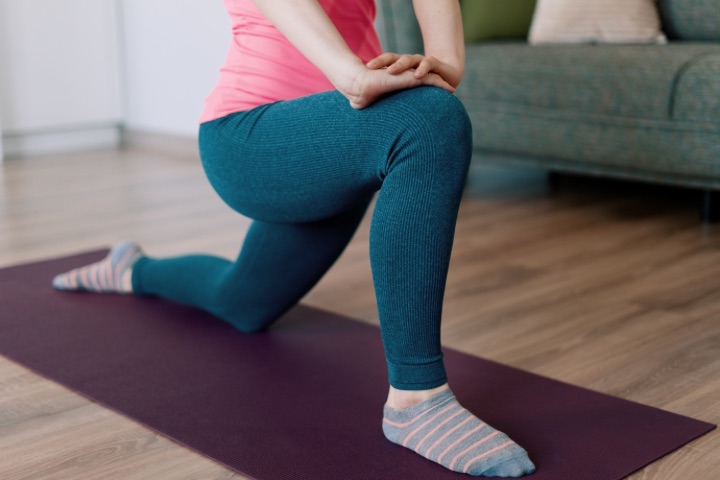Breaststroke is one of the most popular swimming strokes, known for its efficient use of energy and smooth movements. However, breaststroke swimmers are also prone to a common injury known as breaststroker’s knee.
Breaststroker’s knee is a condition that causes pain in the knee joint due to repetitive movements involved in the breaststroke swimming technique. This type of knee pain is prevalent in breaststroke swimmers and can significantly impact their performance both in and out of the pool.
Breaststroker’s knee is a common injury among swimmers who regularly perform the breaststroke. The repetitive kicking motion involved in this swimming style can place excessive strain and stress on the knee joint, leading to pain and discomfort.

Photo Credit: Freepik
Understanding the biomechanics of the breaststroke and the potential risk factors associated with this condition can help swimmers better prevent and manage this injury.
The breaststroke involves a unique kicking motion characterised by the simultaneous movement of the legs in a frog-like motion. This motion places considerable pressure on the knees, as the legs are forcefully brought together and then extended outward in a whip-like movement. This repetitive motion can lead to inflammation and irritation of the tendons and ligaments surrounding the knee joint, causing pain and discomfort.
Several factors can contribute to the development of breaststroker’s knee, including poor technique, muscle imbalances, and overuse. Swimmers without proper training on the correct breaststroke technique may be at increased risk of injury. Additionally, muscle imbalances in the legs, hips, and core can place added pressure on the knees during the swim stroke. Finally, overuse and repetitive strain can lead to inflammation and pain in the knee joint over time.
By understanding the biomechanics of the breaststroke and the potential risk factors associated with the breaststroker’s knee, swimmers can take proactive steps to prevent and manage this common injury.
Breaststroker’s knee can cause different types of knee pain, and recognising the symptoms is crucial for swimmers to seek treatment and prevent the condition from worsening. The most common symptom is pain inside the knee, where the tendons and ligaments attach to the bone. Swimmers may also experience stiffness, swelling, and instability in the knee joint.

Photo Credit: pch.vector
Over time, a breaststroker’s knee can impact a swimmer’s performance and cause pain during daily activities. It’s essential to pay attention to any persistent or worsening symptoms and seek medical attention if necessary.
Swimmers may experience different types of knee pain depending on the severity of the condition. Some swimmers may feel a dull ache in the knee after swimming, while others may experience sharp pain that interferes with their ability to perform the breaststroke technique. It’s important to be aware of the different types of knee pain to recognise them and seek the appropriate treatment in a timely manner.
Swimmers should contact a healthcare professional if they experience persistent or worsening knee pain, especially if it interferes with their daily activities or breaststroke performance.
Preventing breaststroker’s knee is crucial for swimmers who want to continue performing at their best in the water. The following strategies can help reduce the risk of this condition:
If you begin to experience knee pain, taking action before the condition worsens is important. The following management strategies can help alleviate symptoms:

Photo Credit: ArthurHidden
The following exercises can help strengthen the muscles around the knee joint and improve swimming technique:
Remember, prevention is key when it comes to breaststroker’s knee. By reducing your risk of injury and addressing pain early, you can continue to enjoy the benefits of swimming without the hindrance of knee pain.
If you are experiencing symptoms of a breaststroker’s knee, it is essential to seek medical attention promptly. The treatment plan will depend on the severity of your injury and may include conservative, non-invasive approaches or more advanced treatments.
Conservative treatment options for breaststroker’s knee may include physiotherapy, anti-inflammatory medications, and bracing. Physiotherapy can help reduce pain and inflammation and improve knee strength and flexibility.

Photo Credit: nakaridore
Anti-inflammatory medications such as ibuprofen can also help manage pain and reduce inflammation. Additionally, a knee brace can provide support and stability, allowing your knee to heal while you continue to swim.
If your symptoms do not improve with conservative approaches, your doctor may recommend more advanced treatment options. These may include injections of corticosteroids or platelet-rich plasma (PRP), which can help speed up the healing process. In severe cases, surgery may be necessary to repair or replace damaged joints or tissues.
Recovery from a breaststroker’s knee can take time, and following your doctor’s advice is essential. This may include rest, ice, compression, and elevation (RICE) therapy and refrain from swimming or other activities aggravating your symptoms. You can gradually return to swimming once your symptoms have subsided, but it is crucial to ease back into training gradually.
Preventing future injuries is essential in managing breaststroker’s knee. This may involve modifying your swimming technique or changing your training routine. It is also important to continue the exercises prescribed by your physiotherapist to strengthen your knees and prevent future injuries.
Breaststroker’s knee is a common swimming injury that causes pain and discomfort in the knee area. Breaststroke swimmers most often experience it due to the repetitive kicking motion involved in this swimming technique.
The biomechanics of the breaststroke swimming technique primarily causes Breaststroker’s knee. The repetitive kicking motion puts strain on the knee joint, leading to inflammation and pain. Other contributing factors include poor technique, muscle imbalances, and inadequate warm-up.
The symptoms of breaststroker’s knee can vary but often include pain, tenderness, swelling, and stiffness in the knee joint. Swimmers may also experience a clicking sensation or weakness in the affected knee. If symptoms persist or worsen, it is important to seek medical attention.
To prevent breaststroker’s knee, swimmers should focus on proper warm-up and stretching techniques. Strengthening exercises targeting the knee muscles can also help prevent injuries.
If diagnosed with a breaststroker’s knee, managing the condition involves rest, ice, compression, and elevation (RICE) therapy and modifying or discontinuing breaststroke training if necessary.
Treatment for breaststroker’s knee may involve conservative approaches such as physiotherapy, anti-inflammatory medications, and the use of knee braces. In more severe cases, injections or surgery may be recommended.
Recovery from breaststroker’s knee varies for each individual but typically involves a combination of rest, rehabilitation exercises, and gradually returning to swimming under medical guidance.